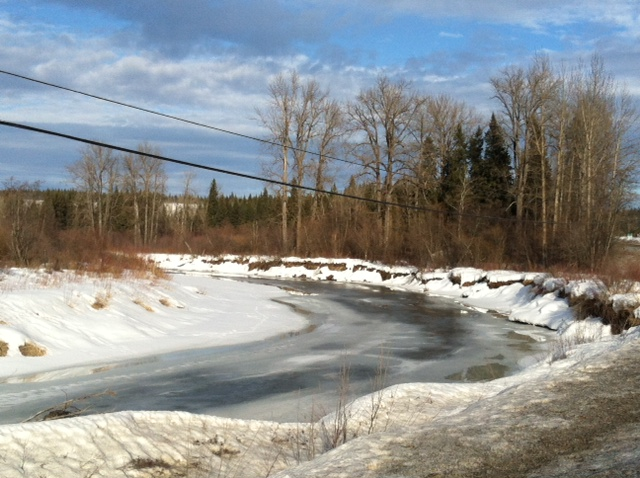Don’t Tread On Thin Ice

Water is a sure sign ice on the Mud River is unsafe as temperatures hover near zero
Prince George, BC – It is the ‘shoulder’ season between winter and spring that often requires extra vigilance as you head outside to enjoy any activities near frozen waterways…
"Really the safest ice at this time of year is ice that doesn’t have water underneath it and, by that, what I mean is that if people are wanting to go skating, then a community rink is far safer than to go out onto a waterfront," says Becky Row, Regional Manager for Northern BC and Yukon with the Canadian Red Cross.
"Just because we are starting to go through a transition and it’s difficult to ensure the safety of the ice is what people to need it to be."
Snowmobilers, in particular, should be extremely careful at this time of year. "It’s really difficult to predict the thickness of ice if we’re going across a large body of water because there’s water movement underneath, which really thins the ice," says Row. "And so it might be fine to scoot along on your snowmobile until you get towards the centre of that waterway and then – all of a sudden – you’re on an opening and it’s very easy to not those and go in."
Row says for ice to be considered safe it needs to be of uniform thickness: 15cm (6") for small groups to skate or walk, 20cm (8") for large groups, and 25cm (10") for snowmobiles or all terrain vehicles.
The Red Cross has a number of ice safety tips and a step-by-step guide for what to do if you get into trouble on the ice, by clicking here.

Comments
Comments for this article are closed.